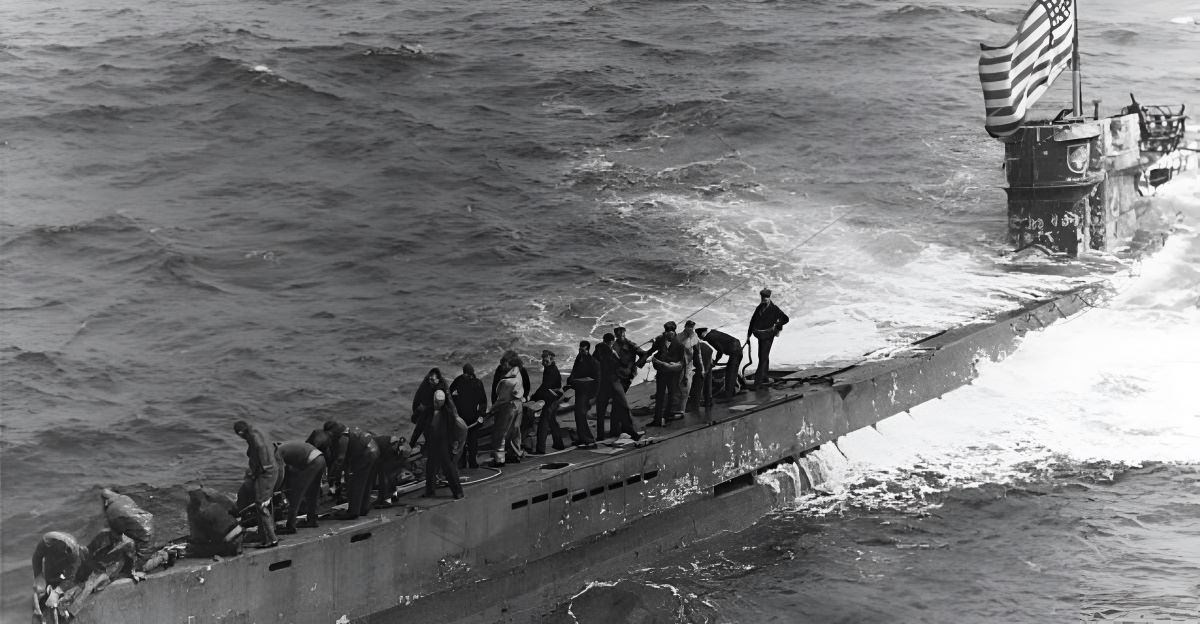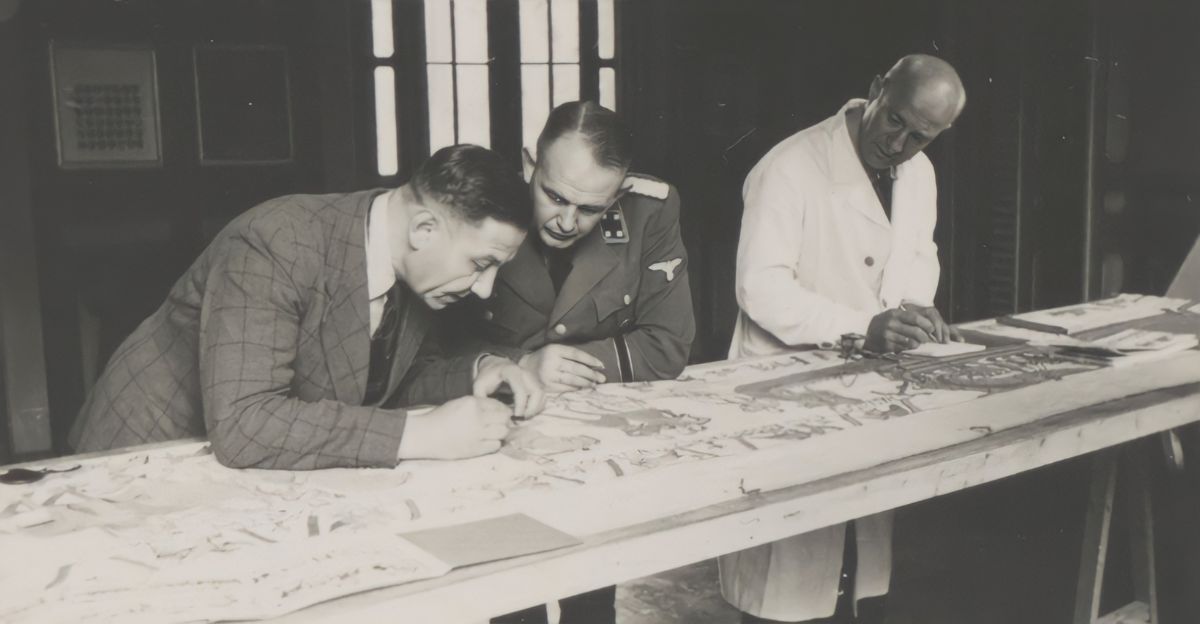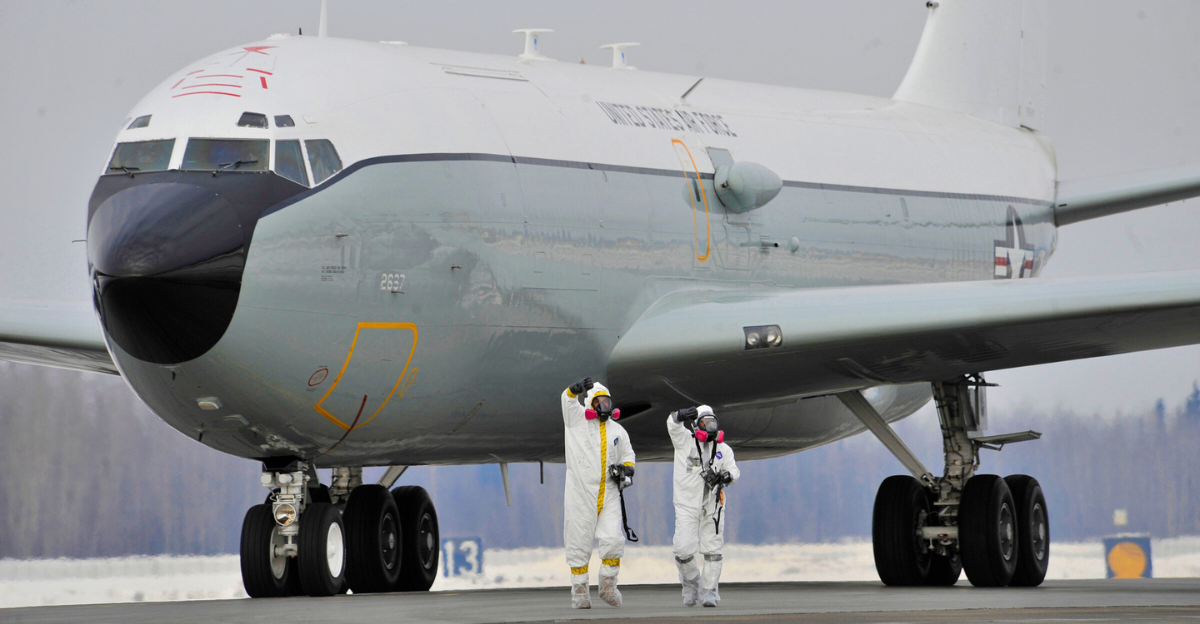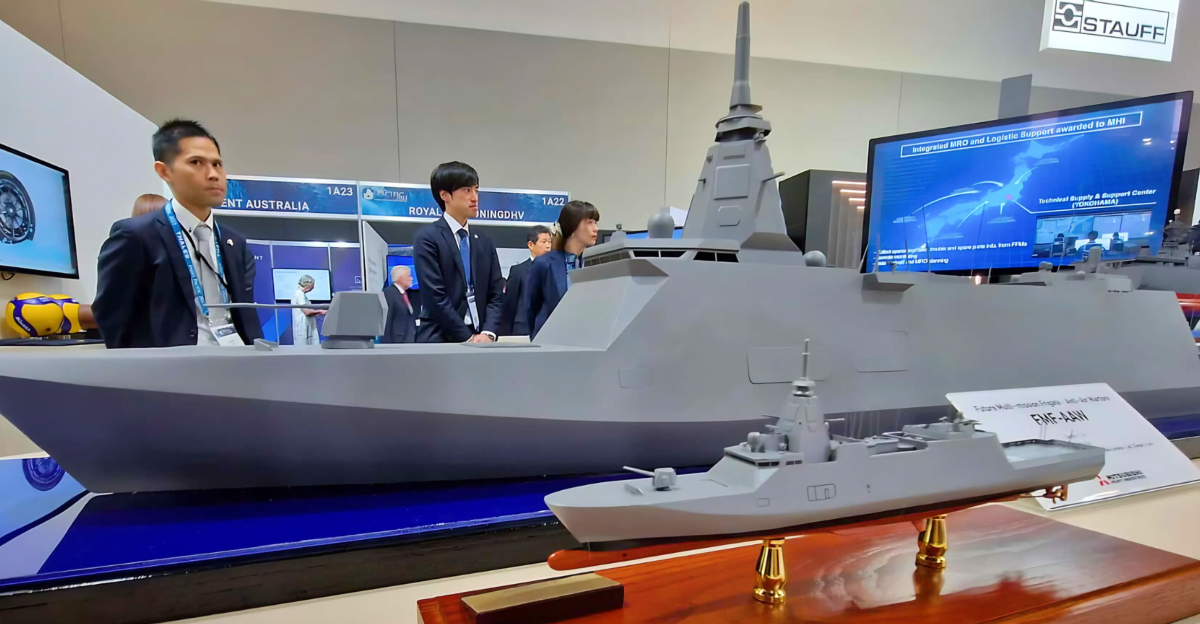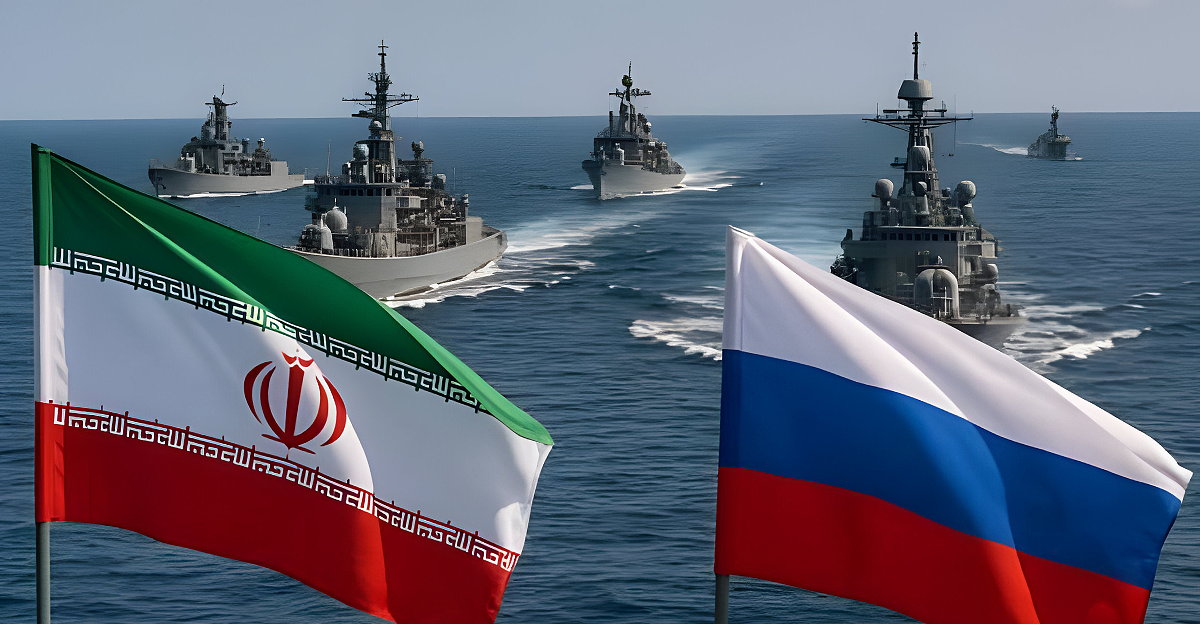
Iran and Russia recently conducted a joint naval training exercise in the Caspian Sea, which has drawn the attention of other nations.
According to Xinhua news agency, the exercise began on July 21, 2025, and involved ships from both nations practicing rescue operations together.
The Caspian Sea

The Caspian Sea is the world’s largest lake, though it’s called a “sea” because of its size and saltwater content. According to the Jamestown Foundation, the Caspian Sea contains essential oil and gas reserves similar to those in Kuwait.
Only five nations – Iran, Russia, Azerbaijan, Kazakhstan, and Turkmenistan – are allowed to conduct naval operations here, making it a private maritime zone for these five nations.
The Exercise

This isn’t the first time that Russia has joined Iranian-led rescue exercises, which started ten years ago. SpecialEurasia reports that they have since become an annual event.
These navies are practicing how to save people at sea and coordinate their operations when working together.
Growing Regional Competition

The timing of this exercise is important as other countries in the region are also forming partnerships.
According to Caliber.Az, Turkey has been helping Azerbaijan and Kazakhstan modernize their navies with new equipment, with Russia and Iran on one side and Turkey with its regional allies on the other.
What Happened

The main exercise occurred on July 22, when Iranian and Russian ships deployed their navies to practice a mock rescue scenario. According to Tasnim news agency, an Iranian missile boat pretended to be in distress while a Russian rescue ship practiced towing it to safety.
Meanwhile, Iranian helicopters lifted dummy “survivors” from the water. These are standard emergency procedures that coast guards and navies practice worldwide.
Regional Reactions

The exercise immediately affected neighboring countries and highlighted tensions in the region. Azerbaijani outlets reacted sharply, calling the drill a show of force “directed at Baku” and warning it could limit the country’s room in the Caspian.
Kazakhstan, on the other hand, kept a neutral tone: its naval observers attended the operation. At the same time, the defence ministry confirmed plans to proceed with “Khazri-2025,” a bilateral exercise with Azerbaijan in the Kazakh sector later this year.
Official Statements

Lt-Cdr Maksim Glod, commander of the Russian vessel SB738, told WANA news agency that “the purpose of joining this exercise is to enhance cooperation and assess the strength and capabilities of both countries’ naval forces.”
The increased military presence in the region doubled as a show of the nation’s rapid-response and coordination potential.
Broader Military Context

While this small exercise was happening, Russia was simultaneously conducting much larger military exercises called “July Storm” involving 150 ships across multiple oceans, according to the Russian Defence Ministry.
The so-called “July Storm” exercise, which ran from July 23 to July 27, “aimed to test the readiness of the fleet for non-standard operations, the use of long-range weapons and other advanced technology, including unmanned systems,” the ministry said.
Military Numbers

The Institute for the Study of War provides context about military capabilities. Russia’s Caspian naval force has about 2,100 missile launch systems, though this has decreased since ships were moved to other conflicts.
Iran has added three new submarines to its Caspian fleet this year. Meanwhile, Azerbaijan and Kazakhstan have increased their naval spending by 38% compared to last year. These numbers show that despite the small size of this exercise, there’s a real military buildup happening in the region.
Hidden Maritime Activity

Maritime intelligence shows that more is happening behind the scenes in the Caspian than just the training exercise. According to Maritime Executive, there’s been a 46% increase in oil tankers “going dark”—turning off their tracking systems—near Turkmenistan’s coast.
This likely indicates ships trying to avoid international sanctions by conducting secret oil trades. Against this backdrop of hidden activity, a highly visible joint exercise serves as a way for Iran and Russia to show that they still have a strong military presence in the region.
Arms Deals and Diplomacy

Iran’s Defense Minister met with his Russian counterpart in Moscow to discuss weapons purchases during the exercise. Critical Threats reports that Iran wants to buy Russian fighter jets and air defense systems to replace equipment damaged by Israeli airstrikes.
While the deal has not yet been completed, it shows how military exercises often serve as opportunities for broader defense cooperation discussions beyond the training itself.
The Final Parade

Once the exercise was completed, a traditional naval parade featuring ships from both countries sailed in formation. According to Tasnim, the Iranian command ship Separ and other vessels participated in the closing ceremony.
The closing parade “featured naval and aerial units from Iran’s Army Navy, including missile-launching ships Separ, Peykan, Joshan, and the Derfash, as well as IRGC’s Shahid Basir vessel.
Three-Way Regional Split

Times of Central Asia identifies three competing military groups emerging in the Caspian region. The first includes Russia, Iran, and China, which hold annual “Maritime Security Belt” exercises.
The second consists of Turkey and its Turkic-speaking allies like Azerbaijan and Kazakhstan. The third is a more independent partnership between Kazakhstan and Azerbaijan. This division is creating a complex web of alliances that could affect regional stability for years.
Future Plans

Looking ahead, Iran has invited Turkmenistan to join next year’s exercise, potentially expanding the partnership, according to the Jerusalem Post. Russia also considers adding anti-drone training to future exercises, reflecting lessons learned from modern conflicts.
If Turkey’s planned transportation corridor through the region is built, it could change trade routes and make the Caspian Sea even more strategically important for all the countries involved.
What This Means

This exercise raises important questions about the future of the Caspian Sea region. SpecialEurasia analysts ask whether such cooperation represents a genuine partnership or preparation for potential conflict.
Insurance companies monitor whether these exercises affect shipping costs, while local fishing communities monitor how military activities might impact their livelihoods. As regional powers continue to choose sides and conduct competing exercises, the Caspian Sea becomes a key arena where larger global tensions play out on a smaller stage.

